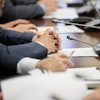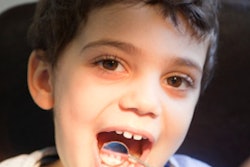
Are dentists superheroes or villains? It depends on who you ask. About 50% of young children perceive dentists as a type of superhero, according to a study published on April 7 in the European Journal of Oral Sciences. But another 30% of children saw dentists as Batman's villain the Joker or as monsters.
The respondents were part of a survey to understand how children perceive dentists in order to bolster trust and improve communication. In addition to superheroes, many children saw dentists as a repair person or an artist. A minority of children, approximately 20%, perceived dentists as scientists or educators.
"Coupled with behavior management, this understanding can be an important part of improving dental visit behaviors and fostering positive postvisit attitudes among children," wrote the author, Dr. Burak Buldur, PhD, of the department of pediatric dentistry at Sivas Cumhuriyet University in Turkey.
Metaphors to build better relationships
The relationship between a dentist and a patient can affect clinical outcomes. These relationships can be tested in pediatric cases involving patients with dental anxiety and dentists under stress.
Children's perceptions of dentists may affect how they take care of their oral health and how they behave when they go to the dental office. These perceptions and behaviors can affect management and, therefore, need to be better understood.
Buldur accomplished this by creating and validating a conceptual model of specific determinants of children's perceptions of dentists. For the research, 1,014 children between the ages of 8 and 13 completed an oral health behavior form, a metaphor form, the Children's Fear Survey Schedule-Dental Subscale, the Dental Trust Scale, and the Early Childhood Oral Health Impact Scale.
The metaphors used to describe dentists were sorted into the following categories: chaotic and unlovable, scary, artistic, protective and alleviative, restorative, scientific, and educative. Buldur then analyzed the data.
| Children's perceptions of dentists | |||
| Category | Percent of children | Metaphor | Main theme |
| Restorative | 18.6% | Repairman, architect, worker | Dentists use complicated restorative materials; they clean decayed or broken teeth with their hands and machine tools. |
| Artistic | 18.3% | Artist, sculptor, painter | Dentists are like artists because both professions increase aesthetic beauty and make people feel more beautiful. |
| Protective and alleviative | 17.6% | Painkiller, superhero, Batman | Dentists eliminate toothaches and rush to help in difficult times. |
| Scary | 13.9% | Monster, tyrant, murderer | Dentists are scary because they pull teeth, the needles they use are frightening, and they don't explain treatments. |
| Chaotic and unlovable | 13.2% | Joker, villain, wizard | Dentists' work is complicated; they use too many instruments and operatories are chaotic and complex. |
| Scientific | 9.7% | Scientist, doctor, genius | Dentistry is difficult and related to medicine and human anatomy. |
| Educative | 8.7% | Parent, teacher, psychologist | Dentists discuss oral health, how to brush, and foods that harm teeth. |
Children perceived dentists in a variety of ways, the results showed. More than half of children viewed dentists as restorative, artistic, or protective. At times, they associated dentists with Batman, painkillers, or lifeguards.
"A dentist is like Batman because our mouth is like a city," said one 11-year-old girl. "Sometimes, when bad things come to our mouth that hurt us, dentists protect us from them. Just like Batman protects the city."
On the other hand, about one-third of children perceived clinicians as unlovable or scary, most often due to their use of needles and terrifying tools. One 8-year-old boy said dentists were like a monster because they "swoop down on children and extract their teeth," while an 11-year-old boy said dentists were like the Joker.
"The Joker has very interesting and complex tools like dentists," the 11-year-old boy said. "I don't know what they are and their images perplex me a lot."
The words least associated with dentists were scientific or educator, Buldur wrote. These children associated dentists with their knowledge about medicine, human anatomy, and oral health.
"Dentists teach us as our teachers do," said one 8-year-old boy. "They show us the path to follow in treatment."
More to learn
The study had several limitations; for example, the proposed model excluded many parental and environmental factors. Those factors should be explored because they may influence children's dental behaviors, Buldur wrote.
Nevertheless, the findings shed some light on how children perceive dentists. Understanding that perception can help alleviate anxiety, improve relationships with patients, and improve treatment outcomes.
"It is essential to understand these pathways to promote effective dentist-child interaction and communication," Buldur concluded.



















